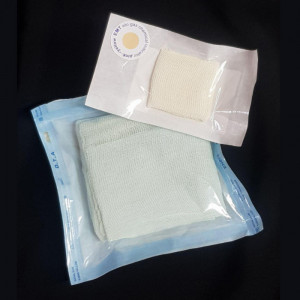| Talie Teb Tohid |

| Registration Date | 30 Nov 2019 |
| Revision Date | 30 Nov 2019 |
| Share |
Medicine Medical Supplies
Nursing padPolyamidoamine
C22H48N10O4 Dendrimer CAS Number : 202009-66-3Containing 1st generation Dendrimer. Blood absorbing in surgical operation Covering all kinds of wounds to absorb blood and protect against infection.
Dressing is done to facilitate wound healing, prevent infection and bleeding, and maintain moisture in the wound, and protect the affected area against mechanical injuries such as scratches. In this process, detergents and disinfectants are used, along with wound adhesive, cotton and sterile gauze and pads. The pad is layers of cotton, gas, or other fabrics that are capable of absorbing secretions and are often exposed to pathogens and microbes. Therefore, using an alternative device that does not cause microbial and infectious problems for consumers is one of the necessities in the medical field. By modifying the structure of these pads using Dendrimer, a kind of nanoscale symmetrical, homogeneous, spherical 3D molecule, the efficiency of medical pads in blood absorption, antimicrobial activity, robustness and moisture uptake is increased. .
Dendrimers are a series of branched polymers that have a large number of side groups. Polypropylene imine is one of the most commonly used dendrimers with amine terminal groups. These dendrimers absorb in the acidic environment of the proton and thus exhibit antimicrobial properties. With these molecules, the absorption properties of medical pads, consisting of sterile gases, cotton and bands, are increased and have antibacterial properties. Cotton pads manufactured by Talie Teb Tohid Co. have provided higher efficiency in blood absorption by using these molecules.
Dynamic light scattering (DLS) method was used to investigate the particle size distribution of Dendrimer. The results indicate the presence of particles less than 10 nm predominantly and of course a little amount of particles larger than 100 nm. The presence of these molecules improves the capability of blood absorbing process.
The assimilation test was performed by immersing a raw pad and a dendrimer containing pad in a blood simulated solution at 37 ° C. As shown in the figure below, the darker pad containing the dendrimer (left figure) indicates more absorption of the blood simulated solution.
The product is classified as Dendrimer according to section 2-3 of Iranian National Standard No. 12098 and also contains nano-obgect according to section 2.2 of ISO/TS 27687.